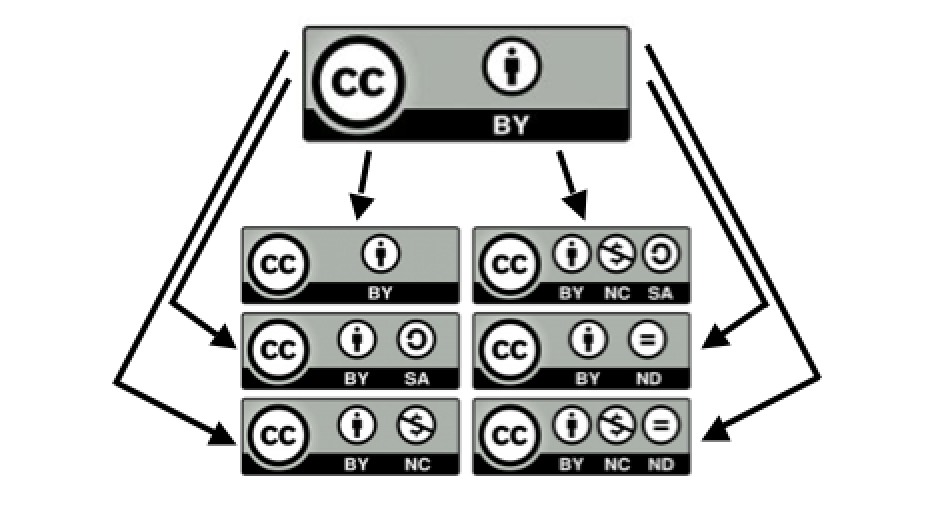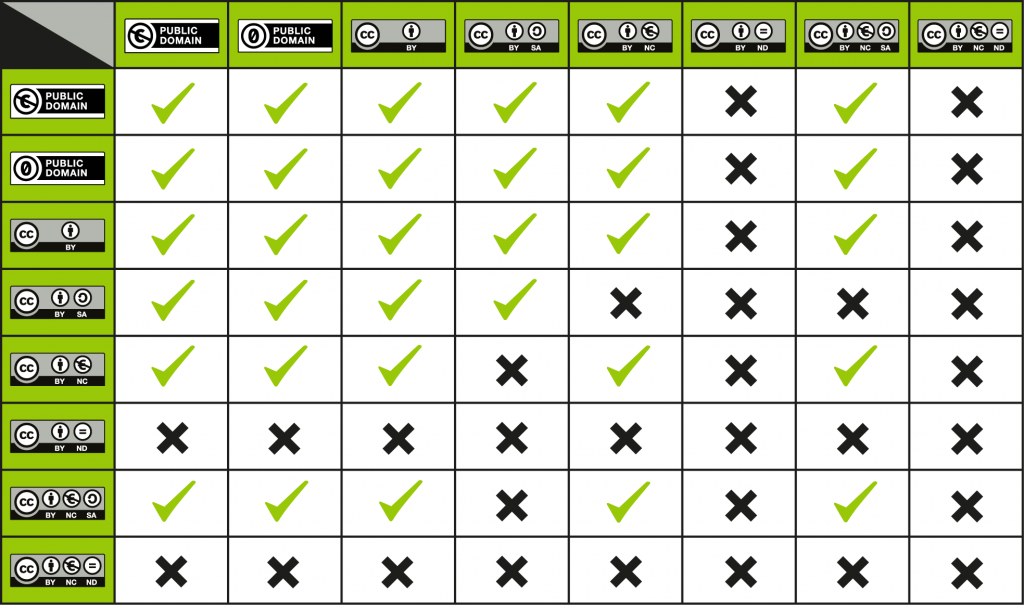12 Combining CC Licenses
Combining CC licenses
When adapting an open textbook (or other OER), you may want to incorporate other people’s works into your adaptation. In order to do that, you must ensure that any existing licenses on the work you’re adapting or including are compatible with each other.
For example, as explained in previous chapter, the CC BY license is the least restrictive and is compatible with all of the other CC licenses. However, if you want to include a work that has a CC BY-SA license, you must use that same license with your adaptation (which may conflict with other licenses already attached to the work). Creative Commons provides more information about CC BY-SA license compatibility on this page.


This video below, from Process Arts, further explains how CC licenses can be combined.
For further help, you can use the use the Creative Commons Choose a License tool or the Wiki/cc license compatibility chart, shown below, or contact your Western Libraries or Western’s Centre for Teaching and Learning.

Attribution
The Creative Commons license definitions and images listed on this page have been copied from Creative Commons and are used under a CC BY 4.0 license.
The Creative Commons Compatibility Chart is copied from Wiki/CC and is used under a CC BY 4.0 license.
This chapter is adapted from the Faculty OER Toolkitby BCcampus is used under a CC-BY 4.0 International license. Download this book for free at http://open.bccampus.ca

